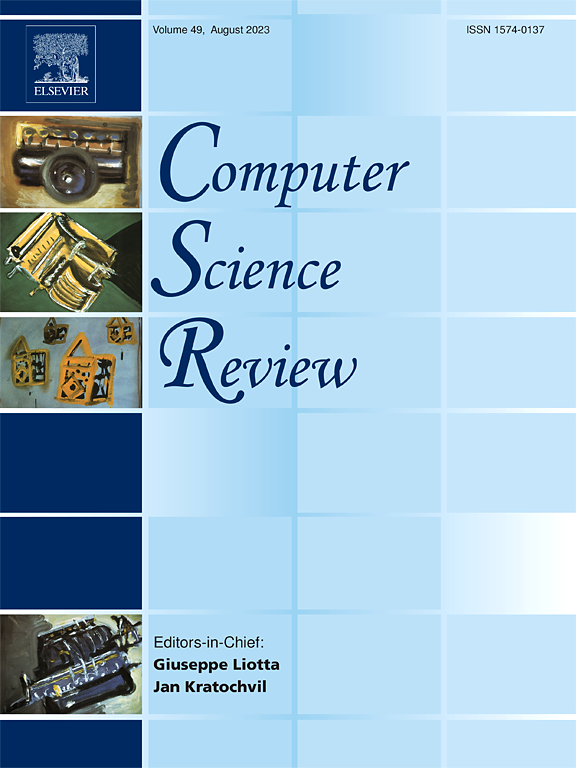情感分析的综合调查:框架、技术和应用
IF 12.7
1区 计算机科学
Q1 COMPUTER SCIENCE, INFORMATION SYSTEMS
引用次数: 0
摘要
情感分析(SA)也被称为观点挖掘,是自然语言处理(NLP)中一个新兴的研究领域。该领域侧重于从文本数据中识别和提取情感和观点,并将其分类为积极、中性或消极。如今,大多数人在社交网络平台上表达自己的观点,通常使用他们的母语。基于internet的应用程序的快速增长产生了大量的个性化信息和广泛的在线用户评论。有大量关于特定领域的相关评论,这些评论对人类来说仍然很难处理。因此,分析用户意见对于提取有意义的见解和有效理解情绪至关重要。本调查全面考察了当前研究背景下情绪分析的应用范围。然后,我们批判性地回顾实验结果和在前沿研究中观察到的局限性。此外,我们还探讨了基于词典的方法、机器学习(ML)和深度学习(DL)策略,以及迁移学习、大型语言模型和多模态方法等新兴技术,讨论了它们的优缺点。此外,我们采用了多种ML和DL策略,利用两个基准IMDb和Yelp数据集。在此之后,我们利用了一个系统的框架,该框架结合了预处理技术、特征提取和评估指标,以促进全面的理解并确保模型的泛化。最后,本研究弥合了传统方法与现代创新之间的差距,解决了情感分析中的各种挑战,并为未来的研究提出了路线图,以缓解这些问题。本文可作为旨在构建有效情感分析框架的研究人员的指导资源。本文章由计算机程序翻译,如有差异,请以英文原文为准。
A comprehensive survey on sentiment analysis: Framework, techniques, and applications
The study of sentiment analysis (SA), also recognized as opinion mining, is a rapidly emerging area of study in natural language processing (NLP). This area focuses on identifying and extracting emotions and opinions from textual data, categorizing them as either positive, neutral, or negative. Nowadays, most of the people express their opinions on social networking platforms, often using their native languages. The rapid growth of Internet-based applications has given rise to a vast amount of personalized information and broad array of user reviews available online. There are a substantial number of pertinent reviews about a particular domain, which remain difficult for humans to process. Therefore, analyzing user opinions is crucial to extract meaningful insights and understand sentiments effectively. This survey comprehensively examines the spectrum of applications for sentiment analysis within the context of current studies. We then critically review experimental outcomes and limitations observed in cutting-edge studies. Furthermore, we explore lexicon-based methods, machine learning (ML), and deep learning (DL) strategies, as well as emerging techniques like transfer learning, large language models, and multimodal approaches, discussing their strengths as well as their weaknesses.
In addition, we employed multiple ML and DL strategies, leveraging the two benchmark IMDb and Yelp datasets. Following this, we utilized a systematic framework that incorporated preprocessing techniques, feature extraction, and evaluation metrics to facilitate comprehensive understanding and ensure model generalization. Finally, this study bridges the gap between traditional methods and modern innovations, addressing various challenges in sentiment analysis and proposing a roadmap for future research to mitigate these issues. This article serves as a guiding resource for researchers aiming to build an effective sentiment analysis framework.
求助全文
通过发布文献求助,成功后即可免费获取论文全文。
去求助
来源期刊

Computer Science Review
Computer Science-General Computer Science
CiteScore
32.70
自引率
0.00%
发文量
26
审稿时长
51 days
期刊介绍:
Computer Science Review, a publication dedicated to research surveys and expository overviews of open problems in computer science, targets a broad audience within the field seeking comprehensive insights into the latest developments. The journal welcomes articles from various fields as long as their content impacts the advancement of computer science. In particular, articles that review the application of well-known Computer Science methods to other areas are in scope only if these articles advance the fundamental understanding of those methods.
 求助内容:
求助内容: 应助结果提醒方式:
应助结果提醒方式:


